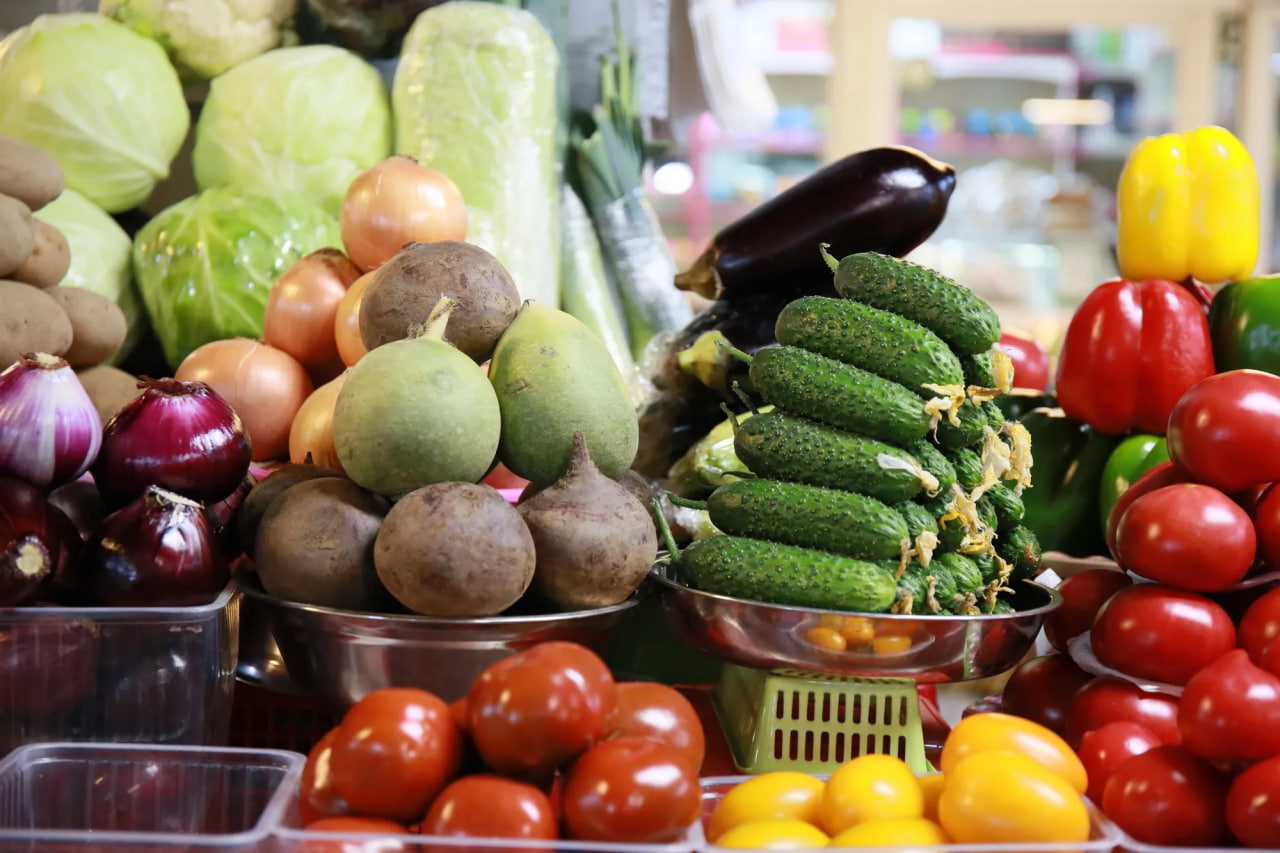ADB experts explain how food security can be improved in Central Asia
The countries of Central Asia face serious food security challenges, but there is great potential to find long-term solutions by working together under a new cooperation framework.

Photo: Ruslan Pryanikov
“In Central Asia, the harsh winter is coming to an end. A thick layer of snow covering farms and unusually low temperatures have reduced the harvest of some vegetables. Countries, including Uzbekistan and Kazakhstan, have temporarily suspended onion exports,” experts from the Asian Development Bank (ADB) say.
In turn, all this has a negative impact on food prices. The region saw double-digit increases in food price inflation last year due to trade disruptions caused by Russia's invasion of Ukraine and supply chain disruptions due to the lingering effects of the pandemic.
In addition, the volume of water in the basins of the Syrdarya and Amudarya rivers, which are a vital source of irrigation water for 10 million hectares of land in Central Asia, is expected to decrease by 15%. Melting glaciers will further aggravate the situation with the timing of sowing and watering crops, since the peak of river flow will occur earlier in the year.
“While there are no easy answers, it is clear that the region will need significant investment and funding to develop a more productive, viable and sustainable agriculture. Regional cooperation can help improve food security. In Central Asia, which is the farthest from the sea compared to other parts of Asia, close cooperation between the governments of the countries of this region can stimulate climate-resilient food production, as well as increase trade to meet food needs,” ADB noted.
Members of the Central Asia Regional Economic Cooperation (CAREC), a partnership of countries in Central Asia and beyond, took a step in the right direction last year.
In November, they approved a new structure that will allow closer cooperation in the field of agricultural development and food security. Cooperation is planned in three main areas.
First, the exchange of best practices in agriculture. Foodstuffs such as wheat, rice, and corn make up the majority of the region's agricultural output, but their yields are low given that many farms in the region are small and low-level mechanization. The average farm area in Azerbaijan, the Kyrgyz Republic, Pakistan and Tajikistan is about 1-3 hectares. This small size limits the ability of farmers to obtain financing to purchase inputs and technologies that could increase production.
Elsewhere in the region, however, modern farming practices are helping to increase yields. For example, the People’s Republic of China has introduced technology that uses less irrigation water by distributing it at low pressure through a network of pipelines. Kazakhstan uses data on soil, weather and crop yields collected by drones and satellites to ensure optimal yields and application of fertilizers and pesticides. Pilot projects in the country based on this approach, known as precision farming, are showing promising results: an 18% increase in milk yield, a 20% reduction in crop growing costs, and an increase in grain yields by 2.5 metric tons per hectare.
Another way to share knowledge is through education and research. The development of vocational training and higher education programs in modern agricultural practices will help prepare the next generation of farmers and agricultural professionals, especially if these programs are targeted at girls and young people in rural areas.
Joint research to develop high-yielding crop varieties that are resistant to pests, epidemics and changing water regimes will help increase crop yields.
Second, work together to develop food value chains. Key components of food value chains, including food storage and processing services, are still underdeveloped in most countries of Central Asia, where up to 25% of harvested fruits and vegetables are wasted.
Countries in the region can address these shortcomings by creating an enabling business environment that encourages the private sector to invest in facilities and services that are vital to the food supply. It is important that governments improve strategic production planning and zoning, develop public infrastructure, and secure land ownership for primary farming and post-harvest processing. It is also important to provide transparent incentives for private sector enterprises and protect their assets after investment.
Third, expand trade by improving food safety systems. Many CAREC countries have outdated food safety systems and sanitary and phytosanitary measures that do not meet international standards. The CAREC program provides advice to its countries on strengthening food safety systems and implementing efficient and transparent electronic sanitary and phytosanitary certification systems to update these standards.
Improving food safety systems and bringing them in line with international standards will help increase food trade in the region and ensure food availability and affordability. It can also attract foreign direct investment in the food industry, which will help increase supply, meet countries' food needs and expand markets for their products outside the region.
“The countries of Central Asia face serious challenges in the field of food security, but there is great potential to find long-term solutions by working together under a new cooperation framework,” the experts concluded.
Recommended
List of streets and intersections being repaired in Tashkent published
SOCIETY | 19:12 / 16.05.2024
Uzbekistan's flag flies high on Oceania's tallest volcano
SOCIETY | 17:54 / 15.05.2024
New tariffs to be introduced in Tashkent public transport
SOCIETY | 14:55 / 05.05.2023
Onix and Tracker cars withdrawn from sale
BUSINESS | 10:20 / 05.05.2023
Latest news
-
Uzbekistan tops medal table at Asian Cadet Judo Cup in Kazakhstan
SPORT | 18:42
-
Uncertainty grows as new homes remain without gas supply
SOCIETY | 17:46
-
Uzbekistan plans to launch national ferry service in Caspian Sea
SOCIETY | 16:03
-
Dozens of violations, zero accountability: Fergana police cancel fines for chief’s wife’s car
SOCIETY | 16:02
Related News

12:45 / 19.06.2025
How the Israel–Iran conflict reshapes Central Asia's geopolitical landscape

15:56 / 18.06.2025
China to fund public welfare projects in Central Asia with $209M grant

12:14 / 18.06.2025
Central Asia and China sign landmark treaty on eternal friendship and cooperation

20:06 / 17.06.2025



